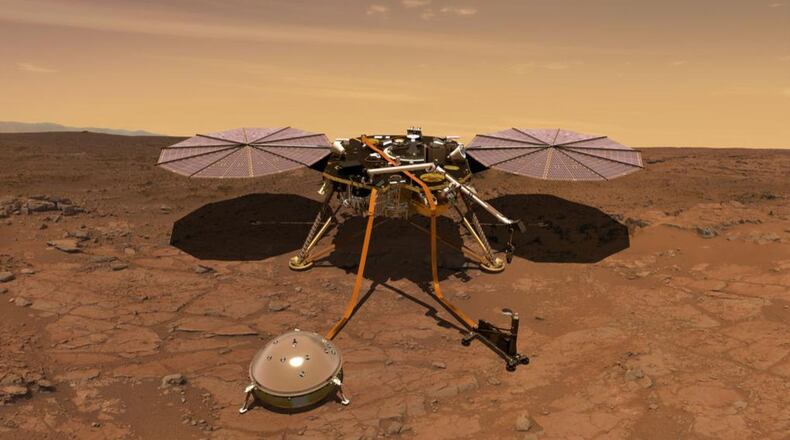NASA's InSight Mars lander is scheduled for liftoff early Saturday on an Atlas V rocket from Vandenberg Air Force Base in California, and is the space agency's first mission to study the interior of the red planet.
InSight, short for Interior Exploration using Seismic Investigations, Geodesy and Heat Transport, will carry an array of science instruments to measure tectonic activity, or marsquakes, meteorite impacts on the planet and how much heat is still flowing from the Martian core, according to NASA.
The lander will also track the planet's wobble as it orbits the sun. Scientists hope the mission will help answer key questions about how other rocky planets in the solar system, like the Earth and the moon, formed, the space agency said.
For the first time a spacecraft will have company on its more than six-month interplanetary journey to the fourth planet from the sun. Mars Cube One, two briefcase-size cube-satellites, or CubeSats, will fly along with the lander so NASA can test the cubes' communication systems and whether the little satellites can transmit data from the lander back to Earth.
InSight is scheduled to land on an area of Mars called Elsyium Planitia, a large flat expanse with few rocks and no mountains.
"We picked something as close to a 100 kilometer-long parking lot as we could find anywhere," InSight's principal investigator Bruce Banerdt said, according to The New York Times.
Banerdt said one of his colleagues called the area “Kansas without corn.”
The mission is supposed to last one Martian year, which is equivalent to two years on Earth.
In case Saturday’s liftoff is delayed, NASA has a five-week window to reschedule the launch.
The lander is scheduled to arrive on Mars on Nov. 26, 2018.
About the Author
The Latest
Featured

